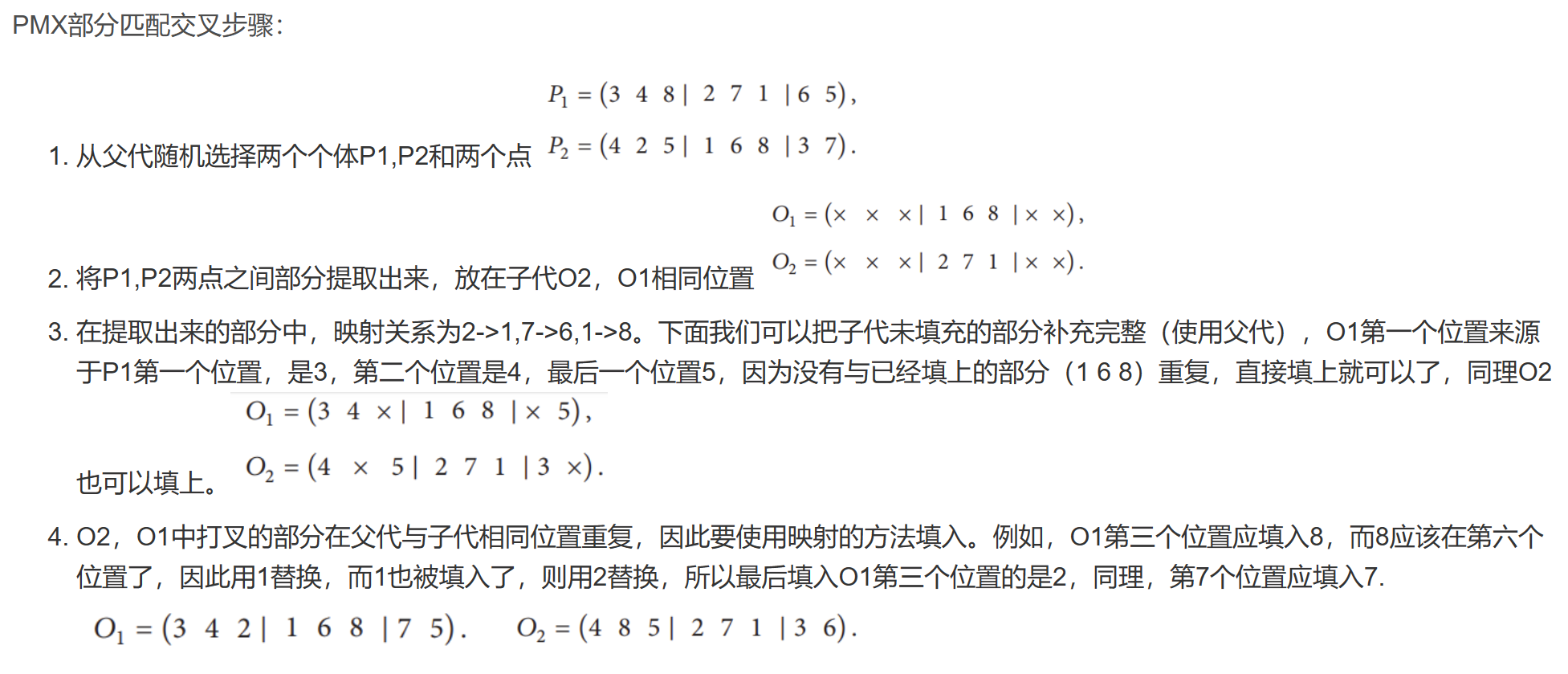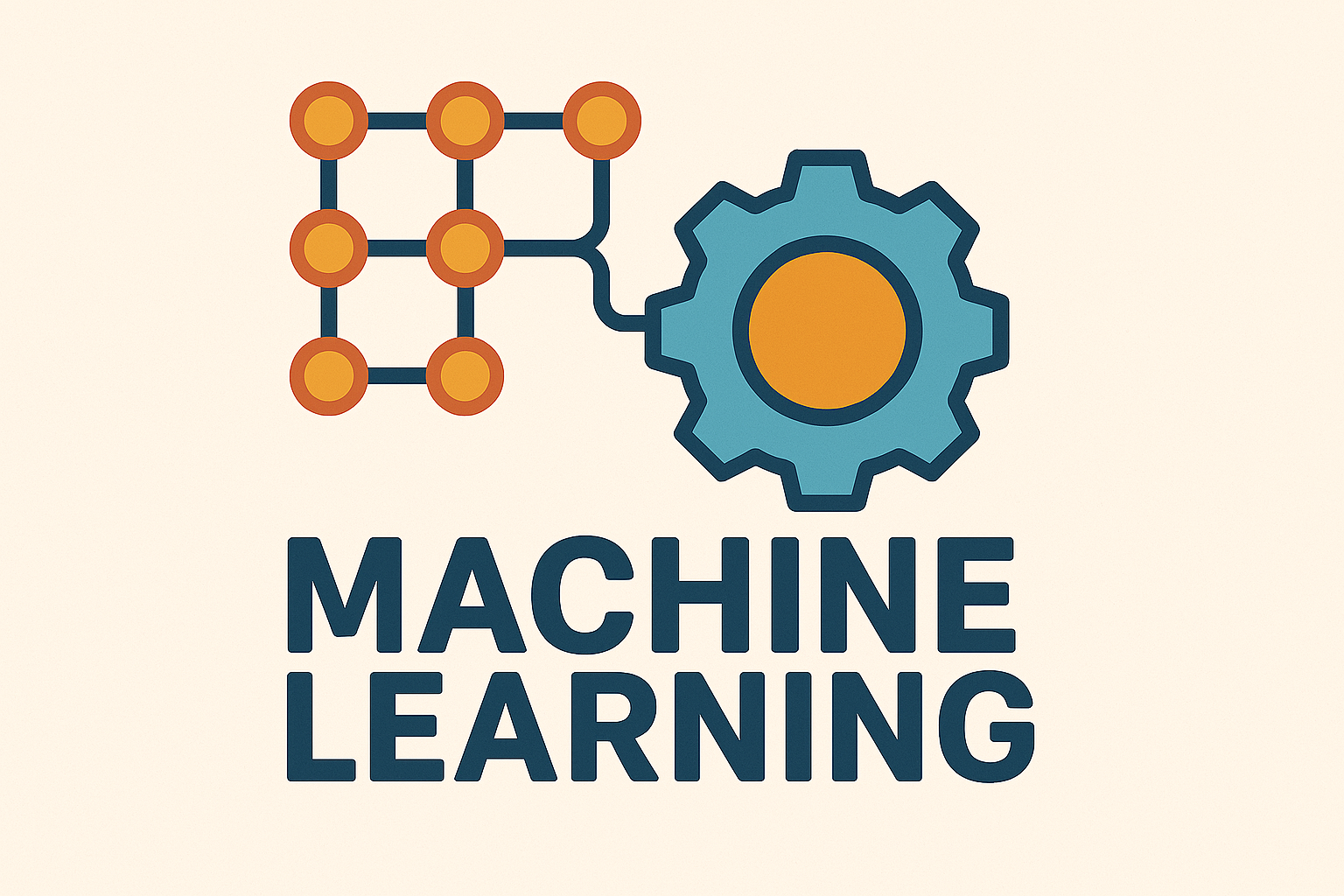1
2
3
4
5
6
7
8
9
10
11
12
13
14
15
16
17
18
19
20
21
22
23
24
25
26
27
28
29
30
31
32
33
34
35
36
37
38
39
40
41
42
43
44
45
46
47
48
49
50
51
52
53
54
55
56
57
58
59
60
61
62
63
64
65
66
67
68
69
70
71
72
73
74
75
76
77
78
79
80
81
82
83
84
85
86
87
88
89
90
91
92
93
94
95
96
97
98
99
100
101
102
103
104
105
106
107
108
109
110
111
112
113
114
115
116
117
118
119
120
121
122
123
124
125
126
127
128
129
130
131
132
133
134
135
136
137
138
139
140
141
142
143
144
145
146
147
148
149
150
151
152
153
154
155
156
157
158
159
160
161
162
163
164
165
166
167
168
169
170
171
172
173
174
175
176
177
178
179
180
181
182
183
184
185
186
187
188
189
190
191
192
193
194
195
196
197
198
199
200
201
| import os
import random
import math
import time
import matplotlib.pyplot as plt
class GeneticAlgTSP():
def initial_population(self, amount, length, elite):
population = []
if elite != []:
elite = self.mutate(elite)
population.append(elite)
while len(population) != amount:
individual = random.sample(range(length), length)
if individual not in population:
population.append(individual)
return population
def initial_cities(self, filename):
cities = []
diskpath = os.path.dirname(__file__)
filepath = diskpath + '//TSP数据库//'+ filename
with open(filepath, 'r') as file:
lines = file.readlines()
for line in lines:
if line.startswith("EOF"):
break
data = line.split()
if len(data) == 3 and data[0].isdigit():
x = float(data[1])
y = float(data[2])
cities.append((x, y))
return cities
def __init__(self, filename, elite):
self.cities = self.initial_cities(filename)
self.population = self.initial_population(10, len(self.cities), elite)
def random2point(self, size):
point1 = random.randint(1, size - 1)
point2 = random.randint(1, size - 1)
while point1 == point2:
point2 = random.randint(1, size - 1)
return min(point1, point2), max(point1, point2)
def euclidean_distance(self, city1, city2):
x1, y1 = city1
x2, y2 = city2
distance = math.sqrt((x2 - x1)**2 + (y2 - y1)**2)
return distance
def fitness(self, individual):
amount = len(individual)
distance = 0
for i in range(amount):
city1 = self.cities[individual[i]]
city2 = self.cities[individual[(i + 1) % amount]]
distance += self.euclidean_distance(city1, city2)
return int(distance)
def tournament_select(self, population):
group1 = random.sample(population, 8)
parent1 = min(group1, key=self.fitness)
group2 = random.sample(population, 8)
if parent1 in group2:
group2.remove(parent1)
parent2 = min(group2, key=self.fitness)
return parent1, parent2
def crossover(self, parent1, parent2):
size = len(parent1)
child1, child2 = [None] * size, [None] * size
point1, point2 = self.random2point(size)
child1[point1:point2 + 1] = parent2[point1:point2 + 1]
child2[point1:point2 + 1] = parent1[point1:point2 + 1]
mapping1 = {parent2[i]: parent1[i] for i in range(point1, point2 + 1)}
mapping2 = {parent1[i]: parent2[i] for i in range(point1, point2 + 1)}
for i in range(size):
if i < point1 or i > point2:
element1 = parent1[i]
while element1 in mapping1:
element1 = mapping1[element1]
child1[i] = element1
element2 = parent2[i]
while element2 in mapping2:
element2 = mapping2[element2]
child2[i] = element2
return child1, child2
def mutate(self, individual):
size = len(individual)
point1, point2 = self.random2point(size)
mutate_individual = individual[:point1] + individual[point1:point2 + 1][::-1] + individual[point2 + 1:]
return mutate_individual
def GA(self, max_iterations, max_populations, mutate_rate):
iteration = 0
while iteration != max_iterations:
size = len(self.population)
parent1, parent2 = self.tournament_select(self.population)
child1, child2 = self.crossover(parent1, parent2)
self.population = sorted(self.population, key=self.fitness)
if size == max_populations:
self.population[size - 1], self.population[size - 2] = child1, child2
elif size <= 18:
self.population.append(child1)
self.population.append(child2)
self.population = sorted(self.population, key=self.fitness)
rate = mutate_rate
for i in range(len(self.population)):
if random.random() < mutate_rate:
self.population[i] = self.mutate(self.population[i])
rate += 0.01
iteration += 1
self.population = sorted(self.population, key=self.fitness)
return self.fitness(self.population[0]), self.population[0]
def plot_path(points, path):
plt.cla()
x_values = [point[0] for point in points]
y_values = [point[1] for point in points]
plt.scatter(x_values, y_values, color='blue', s=15)
for i in range(len(path) - 1):
point1 = points[path[i]]
point2 = points[path[i + 1]]
plt.plot([point1[0], point2[0]], [point1[1], point2[1]], color='red', linewidth=0.1)
point1 = points[path[-1]]
point2 = points[path[0]]
plt.plot([point1[0], point2[0]], [point1[1], point2[1]], color='red', linewidth=0.1)
plt.title('Visualization of Path')
plt.xlabel('X')
plt.ylabel('Y')
plt.legend(['points', 'path'], loc='upper right')
plt.draw()
plt.pause(0.2)
def EA(filename):
max_iterations = 10000
max_generations = 100
max_populations = 20
max_blocktime = 15
mutate_rate = 0.08
generation = 0
best_distance = float('inf')
best_path = []
blocktime = 0
while generation != max_generations:
solve = GeneticAlgTSP(filename, best_path)
distance, path = solve.GA(max_iterations, max_populations, mutate_rate)
if distance < best_distance or blocktime == max_blocktime:
if distance < best_distance:
best_distance = distance
best_path = path
print("第", generation + 1, "次路径长度:", best_distance)
plot_path(solve.cities, best_path)
blocktime = 0
generation += 1
continue
blocktime += 1
return best_distance, best_path
filename = '//' + 'rw1621'+ '.tsp'
best_distance,best_path = EA(filename)
print("最佳路线:",best_path)
print("最短距离",best_distance)
|



